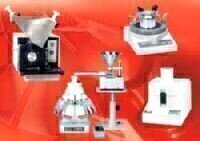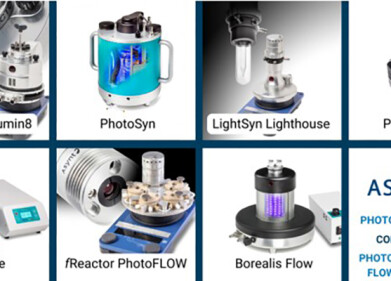Laboratory Products
Use of Laboratory Mills in WEEE and RoHS Tests
Mar 19 2007
The circuit boards which need to be ground are comprised of a mixture of substances. Metals, ceramic components and various plastics: these will all be found in the samples. In order to achieve a fineness appropriate for analysis (
One decisive advantage of the pulverisette 19 in comparison with the competition is the very simple and fast cleaning of the mill, which allows a high sample throughput.
As only a relatively small amount of material is required for the analysis but which must be representative we comminute significantly more than the few grams of sample needed using the universal cutting mill pulverisette 19 and divide this with the Fritsch rotary cone sample divider laborette 27. The representative sample quantity obtained in this way is then further comminuted in the Fritsch variable speed rotor mill pulverisette 14. We use a sieve ring with trapezoidal perforation and a hole widths of 0.12 or 0.2 mm. It is essential to avoid excessive thermal exposure (and in case of the analysis of mercury) the sample is first embrittled in liquid nitrogen (at -198°C). Because disruptive abrasion can occur here when using the rotor of stainless steel, we recommend the rotor and sieve with a coating of titanium nitrite (TiN-coated). Pure titanium would also be possible in individual cases, but it is significantly softer than the substances indicated above, which reduces the service life of the rotor and can also lead to destruction of the sieve.
If the sample of a few grams consists of a relatively high portion of metals, it is also possible to perform the comminution in the Fritsch vibratory micro mill pulverisette 0. In particular, use of a mortar of hardmetal tungsten carbide and use of the Cryo-box, i.e. communition directly in liquid nitrogen, allows the analysis of mercury without thermal exposure leading to any loss of this substance.
Conclusion: The implementation of the above-mentioned EU directives will make the preparation of electrical and electronic scrap necessary in many laboratories. As always, Fritsch is well prepared for these applications with the mills described.
Digital Edition
LMUK 49.7 Nov 2024
November 2024
News - Research & Events News - News & Views Articles - They’re burning the labs... Spotlight Features - Incubators, Freezers & Cooling Equipment - Pumps, Valves & Liquid Hand...
View all digital editions
Events
Nov 18 2024 Shanghai, China
Nov 20 2024 Karachi, Pakistan
Nov 27 2024 Istanbul, Turkey
Jan 22 2025 Tokyo, Japan
Jan 22 2025 Birmingham, UK



















